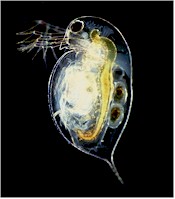Tetrameres is a genus of parasitic roundworms that infects chickens, turkeys, pigeons, guinea fowls, ducks, pheasants, quails, etc. as well as numerous wild birds.
that infects chickens, turkeys, pigeons, guinea fowls, ducks, pheasants, quails, etc. as well as numerous wild birds.
These worms are not as frequent as other gastrointestinal roundworms of poultry (e.g. Ascaridia spp, Capillaria spp, Heterakis spp), but prevalence can be higher than 60% in endemic regions.
These species do not affect dogs, cats, cattle sheep, goats, swine or horses.
The most relevant species for poultry are:
- Tetrameres americana = Found mainly in America and Africa in chicken, turkey, ducks, etc.
- Tetrameres fissispina = Tropisurus fissispinus, found worldwide in ducks, geese, pigeons, seldom in chicken.
The disease caused by Tetrameres worms is called tetrameriasis or tetrameriosis.
Are birds infected with Tetrameres contagious for humans?
- NO. The reason is that these worms are not human parasites.
You can find additional information in this site on the general biology of parasitic worms and/or roundworms.
Final location of Tetrameres
Predilection site of Tetrameres worms is the proventriculus.
Anatomy of Tetrameres
Tetrameres worms are small worms, not longer than ~8 mm. They have a characteristic sexual dimorphism very seldom among helminths. Whereas the males are filiform, head and tail of the females are filiform too, but their body is globular, up to 5 mm in diameter and of a reddish color.
As in other roundworms, the body of these worms is covered with a cuticle, which is flexible but rather tough. The worms have a tubular digestive system with two openings. They also have a nervous system but no excretory organs and no circulatory system, i.e. neither a heart nor blood vessels. Each male has a bursa with two spicules for attaching to the female during copulation.
The eggs of are oval, ~25x45 micrometers and are embryonated when shed with the feces.
Life cycle of Tetrameres

Tetrameres worms have indirect life cycles. Intermediate hosts depend on the species.
- Tetrameres americana has various species of grasshoppers (e.g. Melanoplus spp) and cockroaches (e.g. Blattella germanica) as intermediate hosts.
- Tetrameres fissispina has grasshoppers, cockroaches, earthworms, water fleas (Daphnia spp) and other small crustaceans as intermediate hosts.
Adult female worms lay embryonated eggs in the host's gut that are passed with the feces. Intermediate hosts ingest the eggs, which release the larvae a few hours later. These larvae complete development to infective L3 larvae in about 7 weeks and become encysted in the body of the intermediate host.
Birds become infected after eating contaminated intermediate hosts. Larvae are released after digestion, reach the proventriculus rather quickly and complete development to adult worms in about 6-8 weeks, depending on the worm species and the host. Adult worms bury themselves in the glands of the proventriculus.
The prepatent period (time between infection and first eggs shed) of Tetrameres worms is 7-8 weeks, depending on worms species and host.
Harm caused by Tetrameres, symptoms and diagnosis
Adult females embedded in the glands or in the lining of the proventriculus induce the appearance of nodules as large as cherries that compress the glands and can cause their atrophy. The mucosa of the proventriculus becomes inflamed. All this can lead to accumulation of undigested food in the proventriculus. These food flows back to the esophagus and the crop that become obliterated. Affected animals may show vomiting, green feces (excess bile), weight loss, anemia, etc. Fatalities are possible, especially in young birds.
Diagnosis is based on detection of typical eggs in the feces, or after necropsy on identification of the characteristic nodules or the adult females recognizable as dark red spots.
Prevention and control of Tetrameres
Tetrameres worms can be a problem in birds kept outdoors. They are usually not a problem in confined operations. Nevertheless it is highly recommended to keep the birds' bedding as dry as possible and to frequently change it, because survival of the worms' eggs needs humidity.
The use of insecticides to kill the intermediate hosts is usually not advisable. Populations of intermediate hosts that occur mainly outdoors (earthworms, grasshoppers, water fleas, etc.) are unlikely to be effectively controlled with insecticides, which otherwise would be highly detrimental for other beneficial organisms in the environment. Insecticides can be used against those intermediate hosts that develop indoors (e.g. cockroaches) but only those products that are approved for use on poultry facilities should be used.
Numerous classic broad spectrum anthelmintics are effective against Tetrameres worms, e.g. several benzimidazoles (albendazole, fenbendazole, flubendazole, mebendazole, oxfendazole, etc.), levamisole, as well as macrocyclic lactones (e.g. ivermectin). Piperazine derivatives are also effective against Tetrameres worms.
For use on poultry these active ingredients are usually available as additives for feed or drinking water, seldom as injectables or tablets (mainly for single animal treatment, typical for fighting roosters). However, in some countries Tetrameres species may not be included in the label of wormers, because they are less frequent than other poultry roundworms (e.g. Ascaridia spp, Capillaria spp, Heterakis spp).
Most such wormers (e.g. benzimidazoles, levamisole, piperazine derivatives and pyrantel) kill the worms shortly after treatment and are quickly metabolized and/or excreted within a few hours or days. This means that they have a short residual effect, or no residual effect at all. As a consequence treated animals are cured from worms but do not remain protected against new infections. To ensure that they remain worm-free the animals have to be dewormed periodically, depending on the local epidemiological, ecological and climatic conditions.
So far no vaccine is available against Tetrameres worms. To learn more about vaccines against parasites of livestock and pets click here.
Biological control of Tetrameres worms (i.e. using its natural enemies) is so far not feasible.
You may be interested in an article in this site on medicinal plants against external and internal parasites.
Resistance of Tetrameres to anthelmintics
There are a no reports on confirmed resistance of Tetrameres worms to anthelmintics.
This means that if an anthelmintic fails to achieve the expected efficacy against Tetrameres worms it is most likely that either the product was unsuited for the control of these worms, or it was used incorrectly.
|
Ask your veterinary doctor! If available, follow more specific national or regional recommendations for Tetrameres control. |